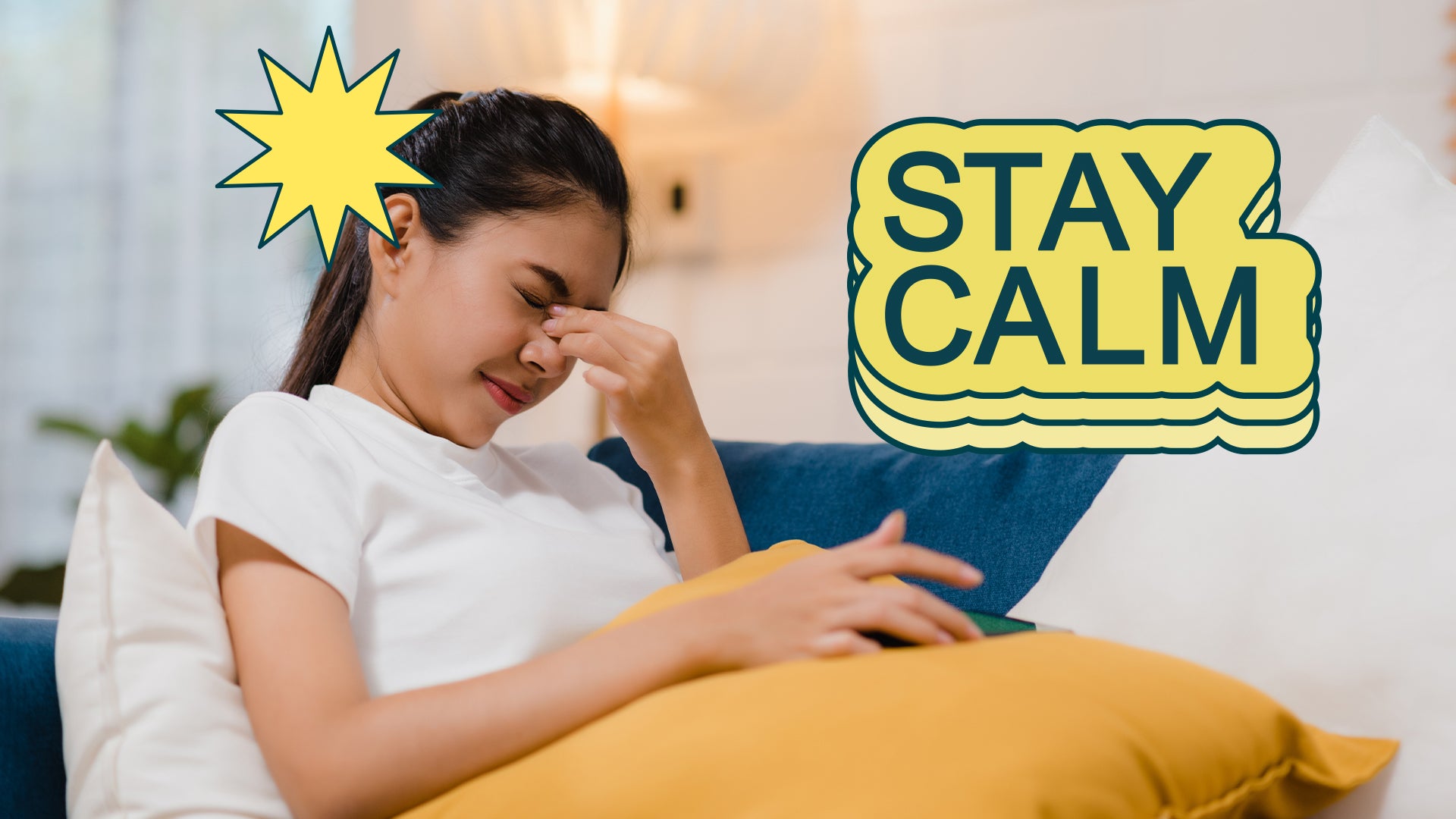Migraines can be a debilitating condition that affects millions of people around the world. They can strike unexpectedly and disrupt daily life, causing intense pain, sensitivity to light and sound, and even nausea. While there is no cure for migraines, there are many ways to manage the triggers that can lead to an attack. Whether you are someone who experiences migraines frequently or just occasionally, learning how to identify and manage your triggers can make a big difference in your quality of life. In this article, we will explore some effective tips and strategies for managing migraine triggers, so that you can take control of your symptoms and reduce the frequency and intensity of your migraine attacks.
Keep a migraine diary
Keeping a migraine diary is an effective tool for managing migraine triggers. A migraine diary is essentially a record of your migraine attacks, including their frequency, duration, and severity, as well as any potential triggers that may have contributed to the onset of the attack. By keeping a detailed record of your migraines, you can begin to identify patterns and potential triggers that may be contributing to your attacks. You can find a template here.
To start a migraine diary, you should first record the date and time of each migraine attack. Next, note the duration and intensity of the pain, as well as any associated symptoms such as nausea, sensitivity to light or sound, or dizziness. It can also be helpful to rate the severity of the migraine on a scale of 1 to 10, with 10 being the most severe.
In addition to recording the migraine attack itself, you should also note any potential triggers that may have contributed to the onset of the attack. These triggers can include things like certain foods or drinks, changes in weather or barometric pressure, stress or anxiety, hormonal changes, or lack of sleep. By keeping track of these triggers, you can begin to identify patterns and potential triggers that may be contributing to your migraine attacks.
Once you have identified potential triggers, you can begin to take steps to avoid or manage them. For example, if you notice that certain foods or drinks tend to trigger your migraines, you may want to avoid them in the future. Similarly, if stress or lack of sleep is a trigger, you may want to consider stress-reducing techniques like meditation or yoga, or make changes to your sleep habits.
Keeping a migraine diary can be a powerful tool for managing migraine triggers. By keeping a record of your migraines and potential triggers, you can begin to identify patterns and take steps to avoid or manage those triggers. With time and practice, you can learn to manage your migraines and reduce the frequency and intensity of your attacks. You can also use apps to keep track of your migraines.
Identify and avoid trigger foods
Identifying and avoiding trigger foods is an effective strategy for managing migraine triggers. For many people, certain foods and drinks can trigger migraines or make them worse. By identifying these trigger foods and making changes to your diet, you can reduce the frequency and intensity of your migraine attacks.
To identify trigger foods, you may want to start by keeping a food diary in addition to your migraine diary. In your food diary, record everything you eat and drink, as well as the date and time of each meal. You should also note any potential trigger foods that you consume, such as chocolate, caffeine, alcohol, or foods containing MSG or nitrites.
After a few weeks of keeping your food diary, review your notes and look for patterns. You may notice that certain foods or drinks tend to coincide with your migraine attacks. For example, you may notice that you tend to get migraines after drinking red wine or eating aged cheese.
Once you have identified trigger foods, you can begin to make changes to your diet to avoid them. This may involve eliminating certain foods or drinks from your diet entirely, or simply reducing your consumption of them. You may also want to consider substitutions for trigger foods, such as choosing decaffeinated coffee instead of regular, or opting for fresh fruits instead of processed snacks.
It's important to note that everyone's trigger foods can be different, so it's important to pay attention to your own individual triggers. Additionally, some trigger foods may be more difficult to avoid, such as caffeine or alcohol, which are commonly found in many foods and drinks. In these cases, moderation and careful monitoring of your intake may be necessary. With time and practice, you can learn to manage your migraines and improve your quality of life.
Practice stress-reduction techniques
Migraines are a neurological condition that can be triggered by various factors such as stress, lack of sleep, certain foods, and environmental changes. Stress is one of the most common migraine triggers, and managing it can significantly reduce the frequency and severity of migraines.
Practicing stress-reduction techniques can be an effective way to manage migraine triggers. Here are some techniques that may help:
-
Mindfulness meditation: This involves focusing your attention on the present moment and accepting your thoughts and feelings without judgment. Mindfulness meditation has been shown to reduce stress, anxiety, and depression, which can all trigger migraines.
-
Yoga: Practicing yoga regularly can help reduce stress and tension in the body. It can also improve flexibility and reduce muscle stiffness, which can contribute to migraines.
-
Deep breathing: Slow, deep breathing can help relax the body and reduce stress. Try inhaling for 4 seconds, holding your breath for 7 seconds, and exhaling for 8 seconds. Repeat this cycle a few times.
-
Progressive muscle relaxation: This involves tensing and then relaxing different muscle groups in the body. This technique can help release tension and reduce stress.
-
Exercise: Regular exercise can help reduce stress and tension in the body. However, it's important to start slowly and gradually increase the intensity and duration of your workouts to avoid triggering migraines.
-
Get enough sleep: Lack of sleep can trigger migraines, so it's important to make sure you're getting enough rest. Aim for 7-8 hours of sleep each night and try to stick to a consistent sleep schedule.
-
Eat a healthy diet: Certain foods and beverages can trigger migraines, so it's important to pay attention to what you're eating. Avoid foods that are high in sodium, sugar, or caffeine, and try to eat a diet rich in fruits, vegetables, whole grains, and lean protein.
Managing stress is crucial in reducing the frequency and severity of migraines. Incorporating stress-reduction techniques into your daily routine can help you better manage your migraine triggers and improve your overall quality of life.
Get enough sleep
Getting enough sleep is essential for managing migraine triggers. Sleep deprivation can trigger migraines and make them worse, so it's important to get a sufficient amount of sleep each night. Here are some tips for getting enough sleep to help manage migraine triggers:
-
Stick to a consistent sleep schedule: Try to go to bed and wake up at the same time every day, even on weekends. This will help regulate your body's sleep-wake cycle and make it easier to fall asleep and wake up.
-
Create a relaxing sleep environment: Make sure your bedroom is quiet, cool, and dark. Use blackout curtains or an eye mask if necessary. You can also use a white noise machine or earplugs to block out any noise.
-
Avoid caffeine and alcohol: Both caffeine and alcohol can disrupt sleep, so it's best to avoid them, especially in the hours leading up to bedtime.
-
Limit screen time before bed: The blue light emitted by electronic devices can interfere with sleep. Try to avoid using electronic devices such as phones, tablets, and computers for at least an hour before bed.
-
Practice relaxation techniques: Engaging in relaxation techniques before bed, such as deep breathing or meditation, can help calm your mind and prepare your body for sleep.
-
Get regular exercise: Regular exercise can help promote better sleep, but it's important to avoid exercising too close to bedtime as it can interfere with sleep.
-
Consider consulting with a sleep specialist: If you're having trouble sleeping, consider consulting with a sleep specialist who can help identify any underlying sleep disorders and recommend appropriate treatments.
Getting enough sleep is crucial for managing migraine triggers. By practicing good sleep hygiene and developing healthy sleep habits, you can reduce the frequency and severity of your migraines and improve your overall quality of life. For more information about this matter, read our article The Role of Sleep and Stress Management in Brain Health.
Avoid environmental triggers
Migraine is a neurological condition characterized by recurring headaches that can cause moderate to severe pain, often accompanied by other symptoms such as sensitivity to light and sound, nausea, and vomiting. While the exact cause of migraines is not fully understood, environmental triggers are known to play a significant role in triggering migraines in many people.
Environmental triggers can include a range of factors, such as changes in weather, hormonal fluctuations, stress, and certain foods and drinks. However, there are also several environmental triggers that are related to our surroundings and can be avoided or managed to reduce the risk of triggering a migraine. Here are some tips for avoiding environmental triggers for managing migraines:
-
Keep a migraine diary: Keeping a record of your migraine attacks and possible triggers can help you identify patterns and avoid potential triggers. Note down the date and time of your migraine attack, the symptoms, and any possible triggers, including environmental factors such as weather changes, strong smells, or bright lights.
-
Control indoor lighting: Bright or flickering lights, including fluorescent lights and computer screens, can trigger migraines in some people. Try to avoid bright lights and adjust the lighting in your home and workplace to reduce glare and flickering.
-
Minimize noise: Loud or sudden noises can also trigger migraines in some people. Use earplugs or noise-cancelling headphones to reduce the impact of loud noises, and avoid noisy environments whenever possible.
-
Reduce exposure to strong smells: Certain odors can trigger migraines, including perfumes, cleaning products, and cigarette smoke. Try to avoid strong smells or use natural cleaning products instead of those with strong chemicals.
-
Avoid changes in temperature: Changes in temperature, particularly sudden changes, can trigger migraines in some people. Try to maintain a consistent temperature in your home and avoid sudden changes in temperature.
-
Manage stress: Stress is a common trigger for migraines. Try to identify sources of stress in your life and find ways to manage it, such as through exercise, relaxation techniques, or therapy.
-
Stay hydrated: Dehydration can also trigger migraines in some people. Make sure you drink plenty of water throughout the day to stay hydrated.
-
Eat a balanced diet: Certain foods and drinks can trigger migraines, including caffeine, alcohol, and processed foods. Try to eat a balanced diet that includes plenty of fresh fruits and vegetables and avoid trigger foods as much as possible.
In summary, environmental triggers can play a significant role in triggering migraines, but there are several steps you can take to avoid or manage these triggers. By keeping a migraine diary, controlling lighting and noise, reducing exposure to strong smells, avoiding changes in temperature, managing stress, staying hydrated, and eating a balanced diet, you can reduce the frequency and severity of your migraines and improve your overall quality of life.
Conclusion
Migraines can be a challenging condition to manage, but with the right strategies and mindset, you can reduce the frequency and severity of your headaches. By keeping a migraine diary, identifying and avoiding trigger foods, practicing stress-reduction techniques, getting enough sleep, and avoiding environmental triggers, you can take control of your migraines and improve your quality of life.
Remember, everyone is different and what works for one person may not work for another. It's important to experiment with different strategies and find what works best for you and your specific situation. If you are struggling with migraines, don't hesitate to seek the help of a healthcare professional. They can provide guidance and support to help you manage your migraines and improve your overall health and well-being.
About the Author

Angelica Castillo is a communications student in the mornings, an actress in the afternoons, and a passionate diary writer by night.
She is the creative copywriter at Magnify Media Agency and is currently working on audiovisual projects. She is also interested in psychology, constantly informing herself about human conduct and looking for ways to improve mental health to help others live a fulfilling life.
Find her on Instagram here:
@aange.cas






















